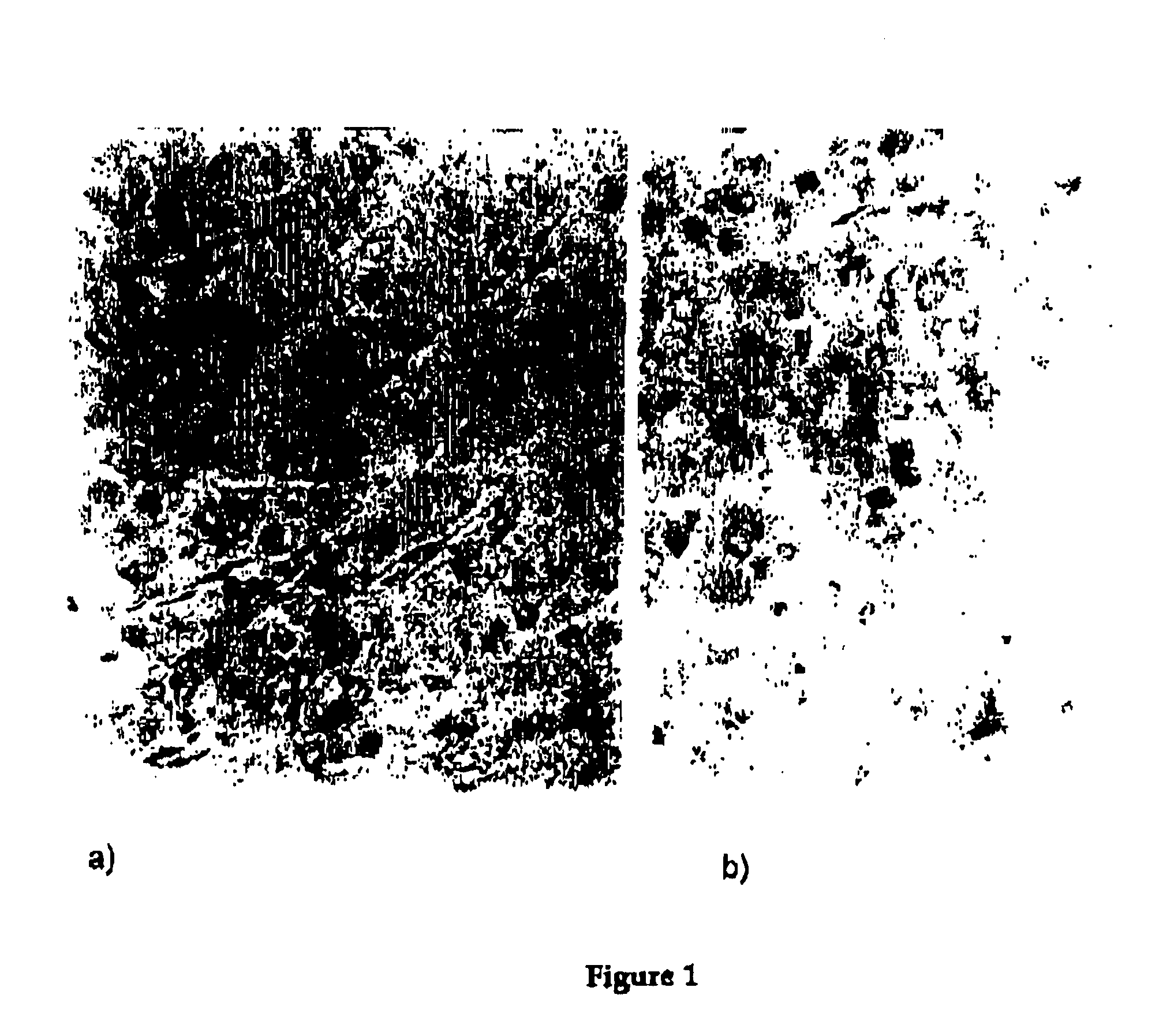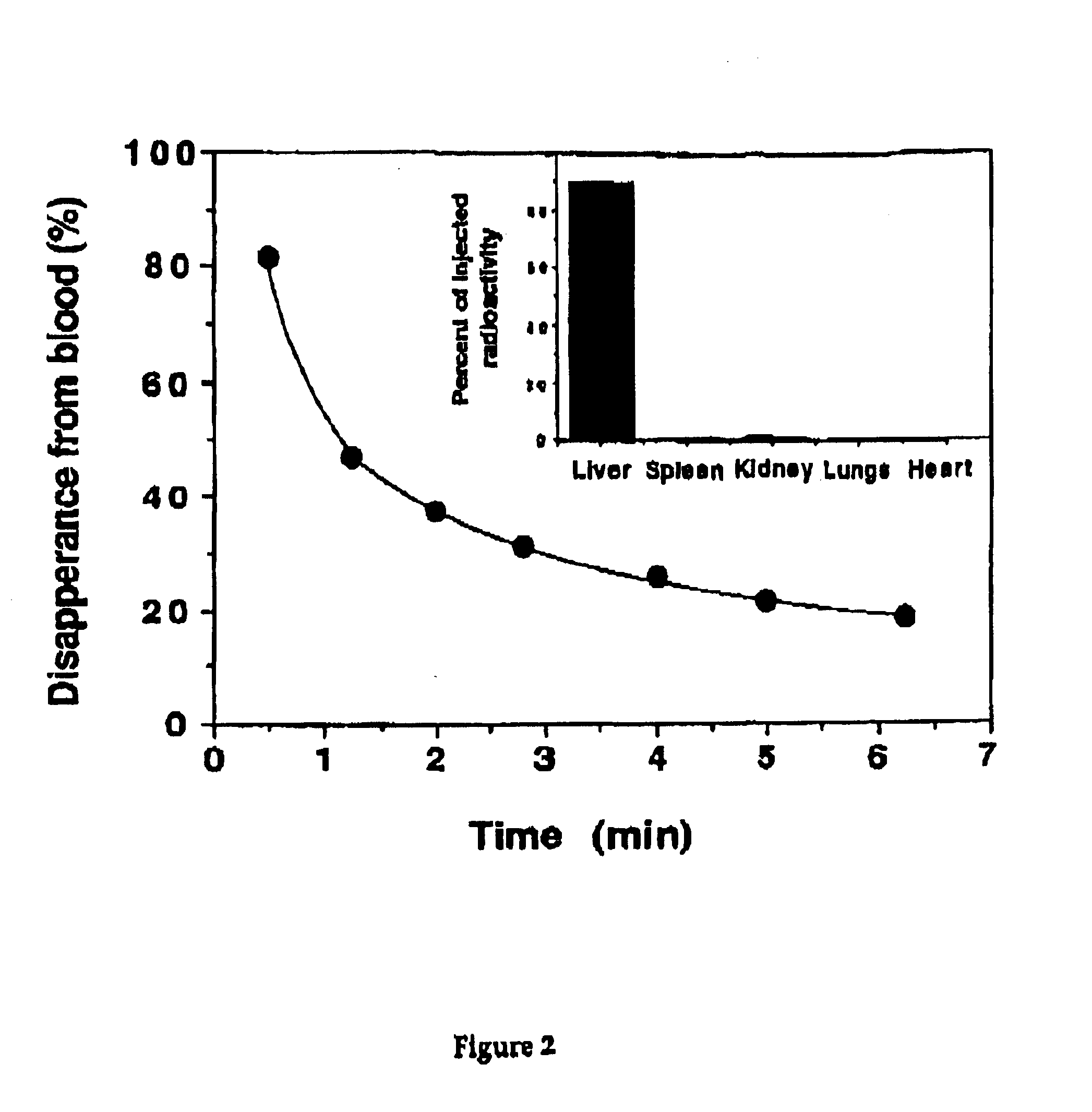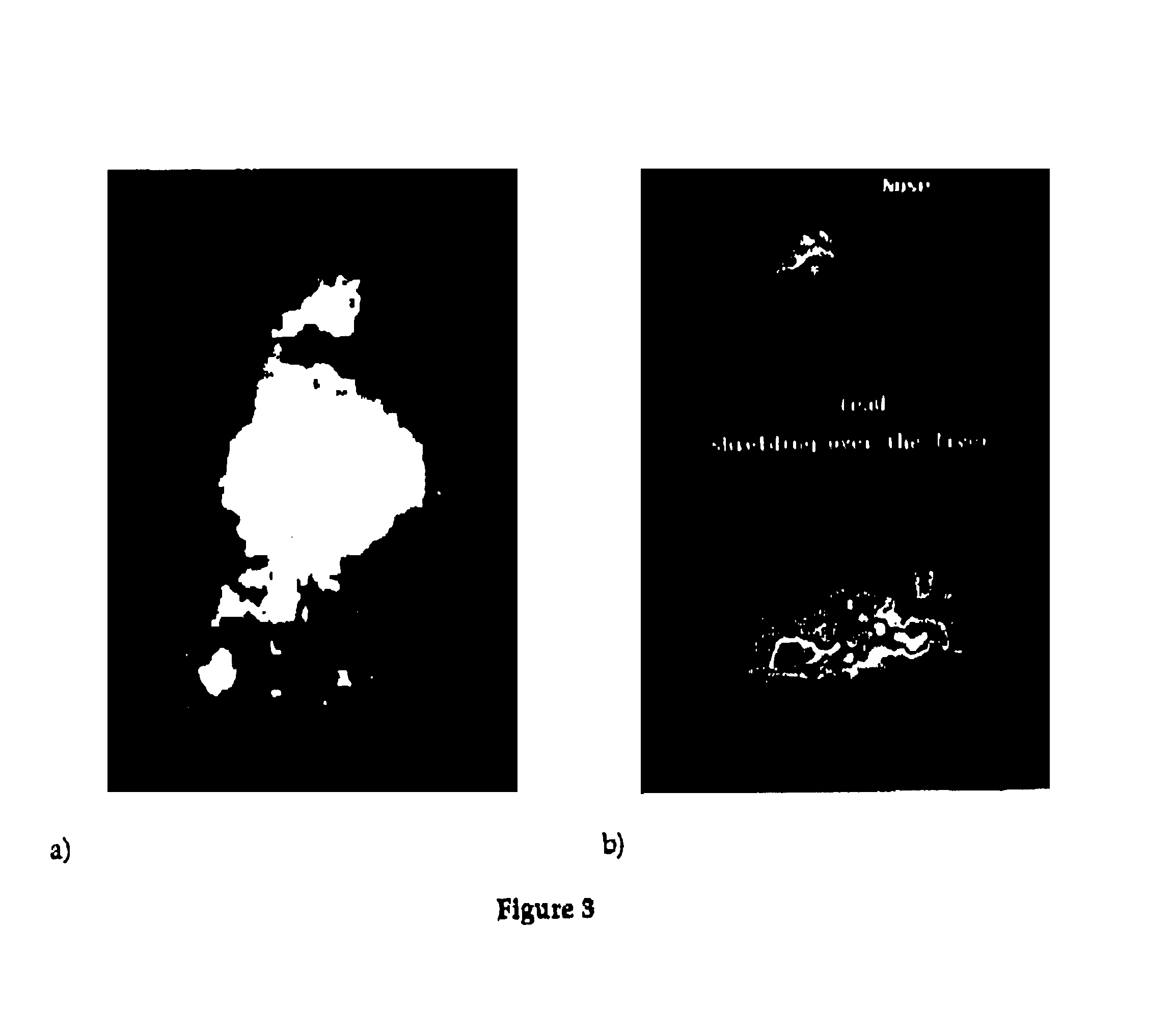Pharmaceutical composition of complex carbohydrates and essential oils and methods of using the same
a technology of complex carbohydrates and essential oils, applied in the field of pharmaceutical compositions, can solve the problems of minimal activity, no reaction when applied to the skin of mammals, and research activities, and achieve the effects of reducing inflammation, pain, swelling, burning, and bruising, and reducing inflammation
- Summary
- Abstract
- Description
- Claims
- Application Information
AI Technical Summary
Benefits of technology
Problems solved by technology
Method used
Image
Examples
example 1
[0033]High molecular weight (>750,000) cosmetic grade hyaluronic acid obtained from Meiji Seika Kaisha, Ltd, was dissolved in distilled / deionized water (DI) to a concentration of from 1.1 to 1.5% wt / vol. This solution was treated with high pH and high temperature to break down the molecular weight to 1000 c / s to<10 c / s as a result of this treatment. This hyaluronic acid was adjusted to 1.0% wt / vol by dilution in DI water. The 1.0% hyaluronic acid solution was aliquoted into 10 vials with 100 mL each. Various essential oils were added to each vial at a concentration of 2.0% vol / vol. The resulting suspensions were mixed at room temperature for 2-3 hours. The following essential oils were tested in this experiment: Rosemary Oil, Tea Tree Oil, Camphor Oil, Oil of wintergreen, Eucalyptus Oil, Cinnamon Oil, Sage Oil, Jojoba Oil, Lemon Oil and Oil of Clove. All of the essential oils were obtained from Lorann Oils. All preparations were held at 4° C. for 14 days after which they were evalua...
example 2
[0047]High molecular weight (>750,000) cosmetic grade hyaluronic acid was obtained from Meiji Sieka Kaisha, Ltd. It was dissolved in distilled / deionized water (DI) to a concentration of 1.0% wt / vol. The viscosity of this solution at 37° C. was >1000 c / s and the molecular weight was >750,000. The 1.0% hyaluronic acid solution was aliquoted into 10 vials with 100 mL each. Various essential oils were added to each vial at a concentration of 2.0% vol / vol. The resulting suspensions were mixed at room temperature for 2-3 hours. The following essential oils obtained from Lorann Oils were tested in this experiment: Rosemary Oil, Tea Tree Oil, Camphor Oil, Oil of Wintergreen, Eucalyptus Oil, Cinnamon Oil, Sage Oil, Jojoba Oil, Lemon Oil and Oil of Clove. All preparations were held at 4° C. for 7 days after which they were evaluated for their suspension characteristics and for sterility according to procedures described in EXAMPLE 1. All oils remained in suspension due to the viscosity of the...
example 3
[0057]A 1.0% wt / vol solution of dermatan sulfate (chondroitin sulfate B obtained from SIGMA Chemical Company) was prepared using DI water. The viscosity of this preparation was <100 c / s. The molecular weight was 15,000. This preparation was mixed 1:1 with the 1.0% wt / vol high molecular weight hyaluronic acid solution described in EXAMPLE 2. Five aliquots of 30 mL each were dispensed into vials. To the first aliquot was added 2.0% vol / vol Rosemary Oil. To vials 2-4 were added either Eucalyptus Oil, Wintergreen Oil or Tea Tree Oil (all obtained from Lorrann Oils). No essential oils were added to the fifth vial. All preparations were held at 4° C. for 7 days after which they were evaluated for their suspension characteristics. All oils remained in suspension due to the viscosity of the hyaluronic acid. Each suspension was remixed and aliquoted into 10 mL amounts in 25 mL vials. Three patients with chronic pain / swelling complaints were given one vial of each preparation to evaluate. The...
PUM
 Login to View More
Login to View More Abstract
Description
Claims
Application Information
 Login to View More
Login to View More - R&D
- Intellectual Property
- Life Sciences
- Materials
- Tech Scout
- Unparalleled Data Quality
- Higher Quality Content
- 60% Fewer Hallucinations
Browse by: Latest US Patents, China's latest patents, Technical Efficacy Thesaurus, Application Domain, Technology Topic, Popular Technical Reports.
© 2025 PatSnap. All rights reserved.Legal|Privacy policy|Modern Slavery Act Transparency Statement|Sitemap|About US| Contact US: help@patsnap.com



